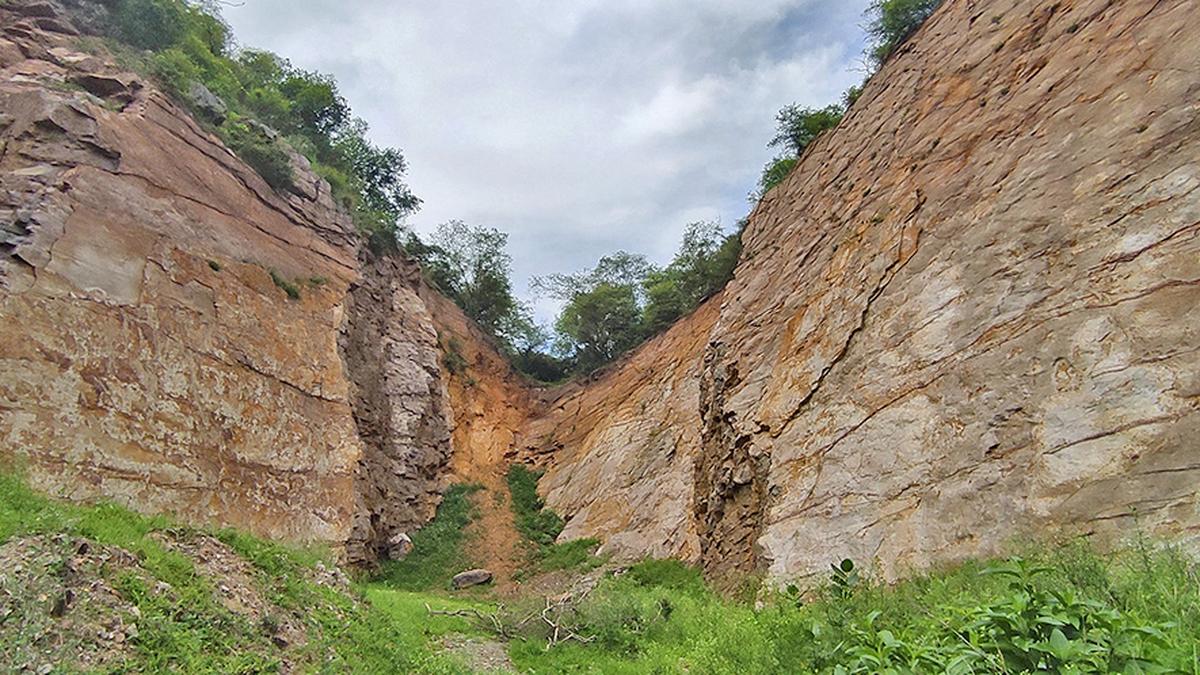
A view of Pandala hills in the Aravali mountain range.
| Photo Credit: file photo
A citizens’ group, ‘People for Aravalis’, has highlighted in a report the issue of waste dumping and burning at over 100 locations in the Aravalis across five districts of Haryana — Gurugram, Faridabad, Nuh, Rewari, and Charkhi Dadri. It is the group’s second report on the state of the mountain range.
The report, which has been submitted to Union Environment Minister Bhupender Yadav and Haryana Chief Minister Nayab Saini, contains geotagged locations of these spots and demands a stop to the degradation of the two-billion-year-old mountain range, said Neelam Ahluwalia, the outfit’s founder member.
The ‘State of the Haryana Aravallis: Citizens’ Report – Part 2’ has been endorsed by conservationist Rajendra Singh, popularly known as the ‘Waterman of India’, retired IFS officers from Haryana, Uttar Pradesh, and Maharashtra, as well as by senior waste management experts and various organisations working for the environment.
Ms. Ahluwalia said the report was prepared after consultations with experts in the field of ecology and waste management, farmers, conservationists, students, educators, legal and environmental researchers, and rural and urban communities living in the lap of the Haryana Aravalis. “The report highlights how, in direct violation of the blanket ban in Nuh on open waste burning within the ecologically fragile Aravali region imposed by the Deputy Commissioner in May 2025, illegal industrial waste burning continues in Khori Khurd, Khori Kalan, Sonari, Gurnawat, Rangala, Naharpur, Sewka and other villages in Tauru, resulting in severe air, soil and ground water pollution,” she said.
Ibrahim Khan, president, Jal Biradari, Nuh, said the chemical-laden waste buried next to the Aravali hills in Tauru villages in Nuh continues to release dangerous toxins, polluting the Aravali soil and the underground water aquifers. “These illegal activities have grave negative impacts on the health of people, cattle, wildlife and flora of the Aravali belt,” he added.
“Mammal diversity and density in Gurugram and Faridabad Aravalis are as high as in protected areas such as Asola wildlife sanctuary in Delhi. These Aravali areas also host many species of birds, butterflies, reptiles, insects, and amphibians,” said senior ecologist Ghazala Shahabuddin.
The ecologist added, “The dumping of the Bandhwari landfill waste in the Mangar sacred forest, old mining quarries, and other forest areas is worrying for the health of the Aravalli ecosystem as the toxic metals get bio-accumulated in the plants and animals and get into the food chain, poisoning the Aravali landscape.”
Published – July 01, 2025 09:46 pm IST



